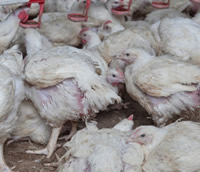An Animal Liberation exposé
Airing never seen before footage of the cruel broiler chicken industry

The regulating authorities have failed to advocate for these animals. We see it as our duty to assist and protect these animals by documenting evidence of their suffering and to show the public the truth of what is happening behind these shed walls, to put pressure onto the regulating authorities to act to end this suffering.